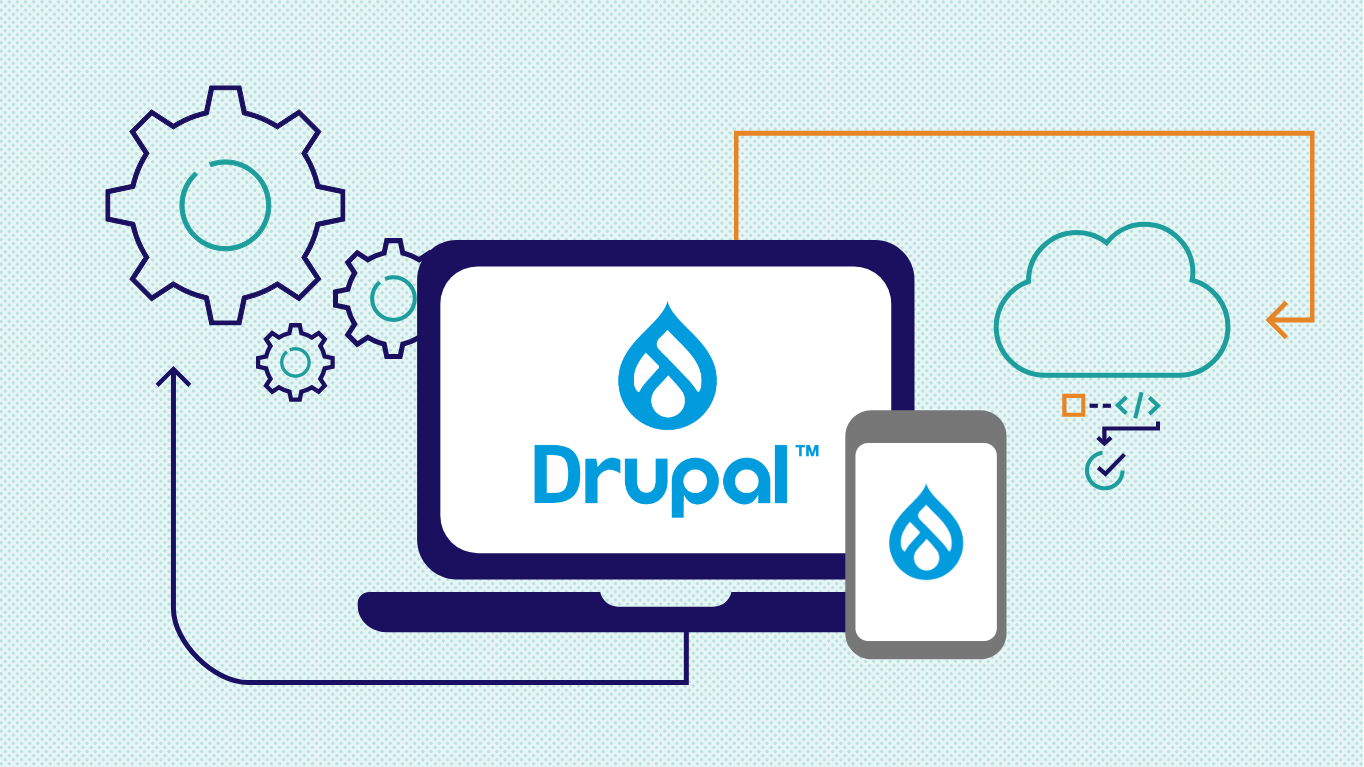An introduction to the Drupal platform

Virtual storefronts, e-commerce and loyalty platforms, client portals ... Companies' needs are increasingly varied, and the current digital ecosystem abounds with more or less specialized solutions—namely, CMS platforms, frameworks, and SaaS website builders. There are as many tools as there are needs for them! Drupal, a specialized content management system, is a popular choice, as it allows you to immediately focus on the specifics of a project.
What is Drupal?
Drupal is content management software that allows you to easily create, manage, and modify a website without any technical IT knowledge. It's a well-established tool with an extremely active community of contributorsOver a million web developers, designers, trainers, and webmasters are continuously shaping the Drupal ecosystem, whether by optimizing code or creating a host of innovative, complementary modules.
These proposed modules touch on everything from usage functions to complete technical developments (e.g., form management, programming interface creation, analytics, menu editing, caching).
Drupal allows you to structure your site down to the smallest detail. The platform relies on the use of proven libraries and frameworks, some of the most well known being Symfony, Doctrine, and Twig. The use of shared libraries forces developers to follow the same programming standards (e.g., the structure of functions and methods, file locations), which simplifies the evolution and maintenance of your site.
The advantages of using Drupal
1. Flexibility
The Drupal platform has three features that allow great flexibility, which is essential to the success of any project:
- A wide range of modules so you can quickly develop your project.
- A scalable code structure used on all Drupal sites, which allows our developers to extend the platform's basic functionality with customized functions.
- A comprehensive input framework, which allows webmasters to work on a wide range of functions without modifying the code, whether to create content, reorganize page blocks, modify menus, launch scheduled tasks, or even manage the site's cache.
By default, all Drupal themes and modules have a responsive and accessible design to ensure an optimal user experience. That means that Drupal sites naturally adapt to suit various screen sizes from the start of conception.
2. Performance and stability
Due to its flexibility, Drupal is technically complex and can cause slow performance if not used correctly. Therefore, it's important to have a competent team implementing all the optimizations offered by Drupal, which will ensure the speed and stability of your project.
3. Security
The core platform and its modules are an integral part of the Drupal security strategy. A project has security measures in place from the moment it's created, and Drupal's security teams are constantly working with the community to resolve issues as they arise. The platform is also less likely to be targeted by hackers compared to other consumer solutions, like WordPress.
Drupal has an excellent security track record and conducts vulnerability assessments to discover potential security risks and provide quick, effective solutions. Security team members regularly review the code to ensure that there are no common vulnerabilities. In addition, updates to the core software and its modules are released monthly to ensure the continued security of all projects.
4. The community
Drupal has a very large and active community. Their activity allows the platform to benefit from frequent new features, optimizations, and fixes. Whether it's by developing the CMS, working on different modules, or optimizing performance and security, contributors help create an environment where bugs and vulnerabilities are detected and resolved very quickly.
Possible limitations
Like any solution on the market, the Drupal platform does have certain limitations.
Here are the main ones to keep in mind:
- The user interface is designed for experienced webmasters. To ensure greater control of content managed through the back-end interface, the Drupal content manager relies on simple fields (e.g., image upload, texts, drop-down menus) that could be considered less ergonomic than other editing interfaces.
- Drupal is not suitable for the needs of small virtual storefronts. The platform is built on complex mechanisms and requires regular maintenance. While it's an ideal engine for high-level sites, it's not the best choice for smaller sites.
- Routinely checking for system updates is essential to the health of any site created with Drupal. As with most platforms, a project cannot be left to run on its own after delivery. Regular monitoring is necessary to keep the system up-to-date and ensure its security and scalability.
Software life cycle
The Drupal platform is constantly improving. Every week, updates are released to correct possible security flaws.
There are three types of releases:
DRUPAL 10.0.1
Major releases
These infrequent updates aim to improve Drupal core. For example, Drupal version 10, released in late 2022, incorporates the latest technologies on the market. For the moment, this version has no announced end-of-life date.
Minor releases
Minor releases add new functionality to Drupal core. Published approximately every six months, they contain all the improvements and fixes for the previous minor release.
Patch releases
These updates have a monthly release window, but a patch may be fast-tracked if a security vulnerability is discovered. The community usually fixes these flaws very quickly and releases the patch directly.
Drupal is a solid choice for building robust, scalable websites. At Tink, we rely on the strengths of Drupal to serve clients like VIA Rail and AbbVie. Our developers are trained to maximize the platform's potential and test its limits so we can meet the needs of most businesses.
